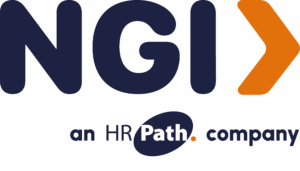
Workforce management isn’t just about scheduling shifts and tracking productivity—it’s about ensuring that every aspect of your operations aligns with ever-changing labor laws and industry regulations. From wage and hour laws to data privacy and workplace safety, compliance plays a significant role in mitigating risk and protecting both employees and employers.
Yet, for many organizations, compliance can feel like a moving target. Regulations vary by region, industry, and even job role, making it difficult to stay ahead. Without a strong compliance strategy, businesses open themselves up to financial penalties, legal issues, and reputational damage—all of which can disrupt operations and impact long-term success.
The Risks of Overlooking Compliance
Non-compliance can be costly, both financially and operationally. Businesses that fail to adhere to labor laws and regulations risk:
- Legal Penalties & Fines – Government agencies such as the Department of Labor and OSHA issue hefty fines for violations related to wage laws, workplace safety, and employee classifications.
- Lawsuits & Liability – Employee lawsuits related to wage disputes, wrongful termination, or discrimination can lead to significant legal costs and settlements.
- Reputational Damage – Compliance missteps can quickly become public, impacting employer branding and making it harder to attract and retain top talent.
- Operational Disruptions – Non-compliance can lead to audits, legal proceedings, and increased scrutiny, all of which pull focus away from core business functions.
A strong workforce compliance framework isn’t just about avoiding penalties—it’s about building a foundation for efficiency, trust, and long-term success.
Key Areas of Workforce Compliance
A proactive approach to workforce compliance starts with understanding the core areas where businesses must stay aligned with regulations:
- Wage & Hour Laws – Ensuring employees are classified correctly, paid fairly, and receive overtime in accordance with federal, state, and industry-specific guidelines.
- Workplace Safety & Health Regulations – Implementing OSHA-compliant policies to protect workers from physical and environmental risks.
- Data Privacy & Security – Managing employee data responsibly under laws like GDPR, CCPA, and HIPAA to prevent breaches and maintain trust.
- Employee Classification & Benefits Compliance – Differentiating between full-time employees, contractors, and gig workers while ensuring benefits and tax obligations are handled correctly.
With so many moving parts, businesses must be proactive rather than reactive when it comes to compliance.
How Workforce Technology Supports Compliance
Technology plays an important role in maintaining compliance by automating processes, reducing manual errors, and providing real-time oversight. Workforce management solutions help businesses:
- Automate time tracking and payroll processing to prevent wage disputes and ensure labor law compliance.
- Monitor and enforce work-hour limits to prevent overtime violations and burnout.
- Centralize employee records and documentation to streamline audits and reporting.
- Flag potential compliance risks in scheduling, benefits administration, and workplace policies.
However, having the right technology in place is only part of the equation—success depends on proper implementation and ongoing optimization.
The Role of an Implementation Partner
Deploying workforce management solutions that align with compliance needs requires expertise. That’s where an implementation partner like Next Generation, Inc. (NGI) makes a difference.
NGI helps businesses navigate compliance challenges by:
- Configuring systems to align with specific labor laws and industry regulations.
- Automating reporting and documentation processes to simplify audits and recordkeeping.
- Integrating workforce solutions with payroll and HR platforms for seamless compliance management.
- Providing ongoing support and updates to adapt to changing laws and requirements.
Rather than just implementing software, NGI ensures that businesses have a sustainable compliance strategy—one that grows with them and keeps operations secure.
Prioritizing Compliance for Long-Term Success
Compliance isn’t just a legal necessity—it’s a strategic advantage. Businesses that invest in compliance-driven workforce management build stronger, more resilient operations while fostering a culture of trust and accountability.
By leveraging the right technology and partnering with experts who understand the nuances of workforce compliance, companies can reduce risk, improve efficiency, and focus on what they do best—growing their business.
